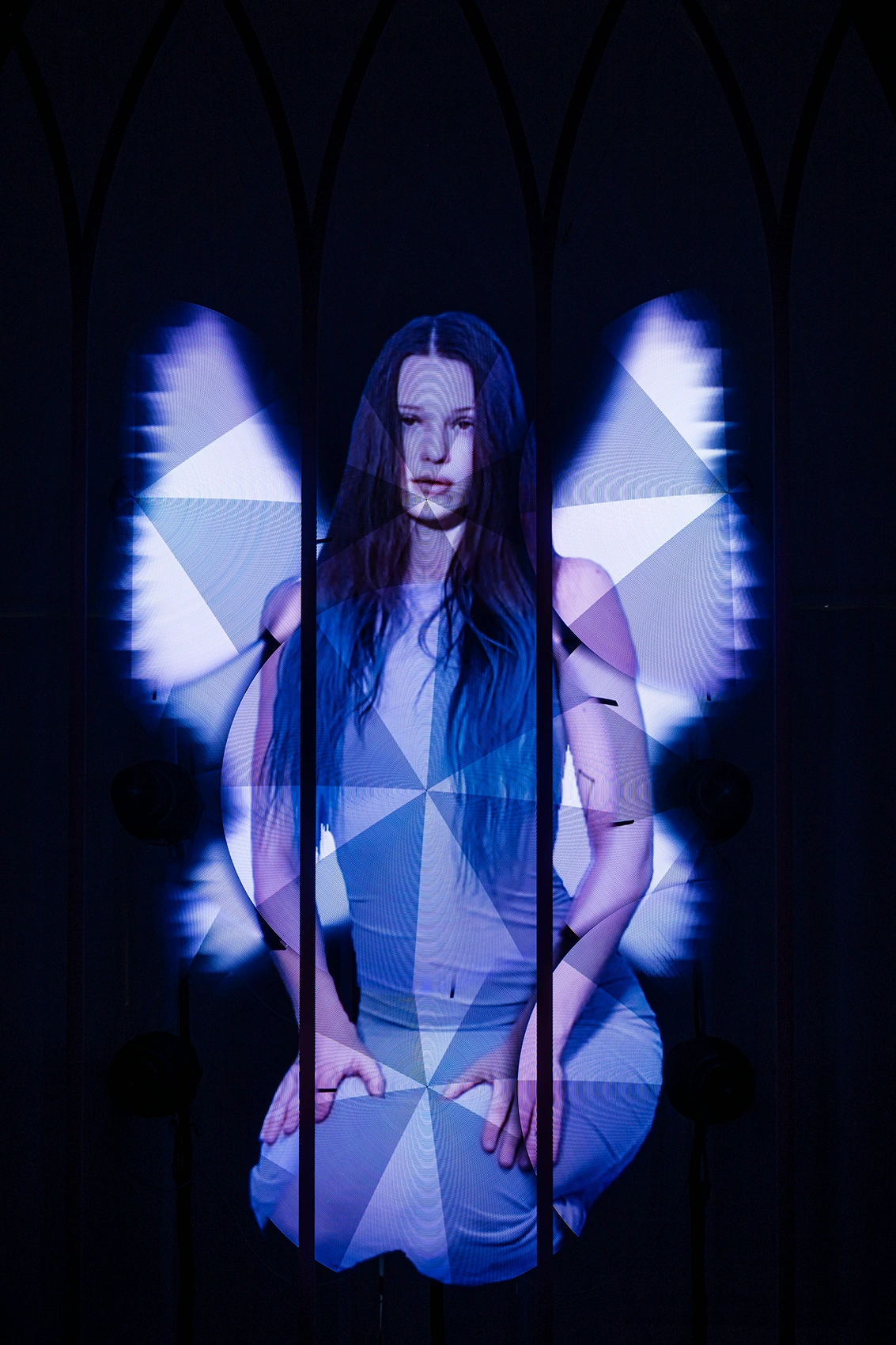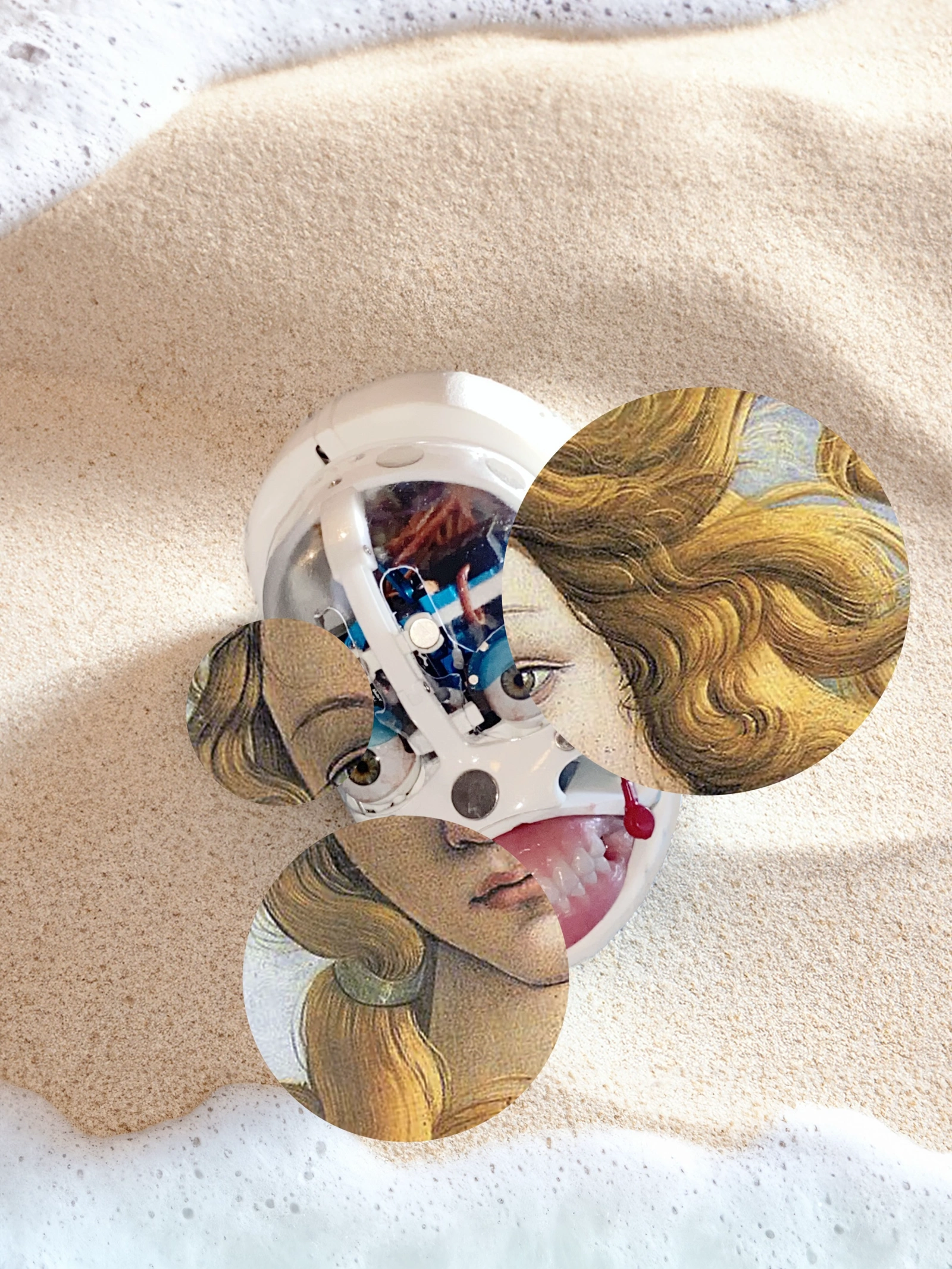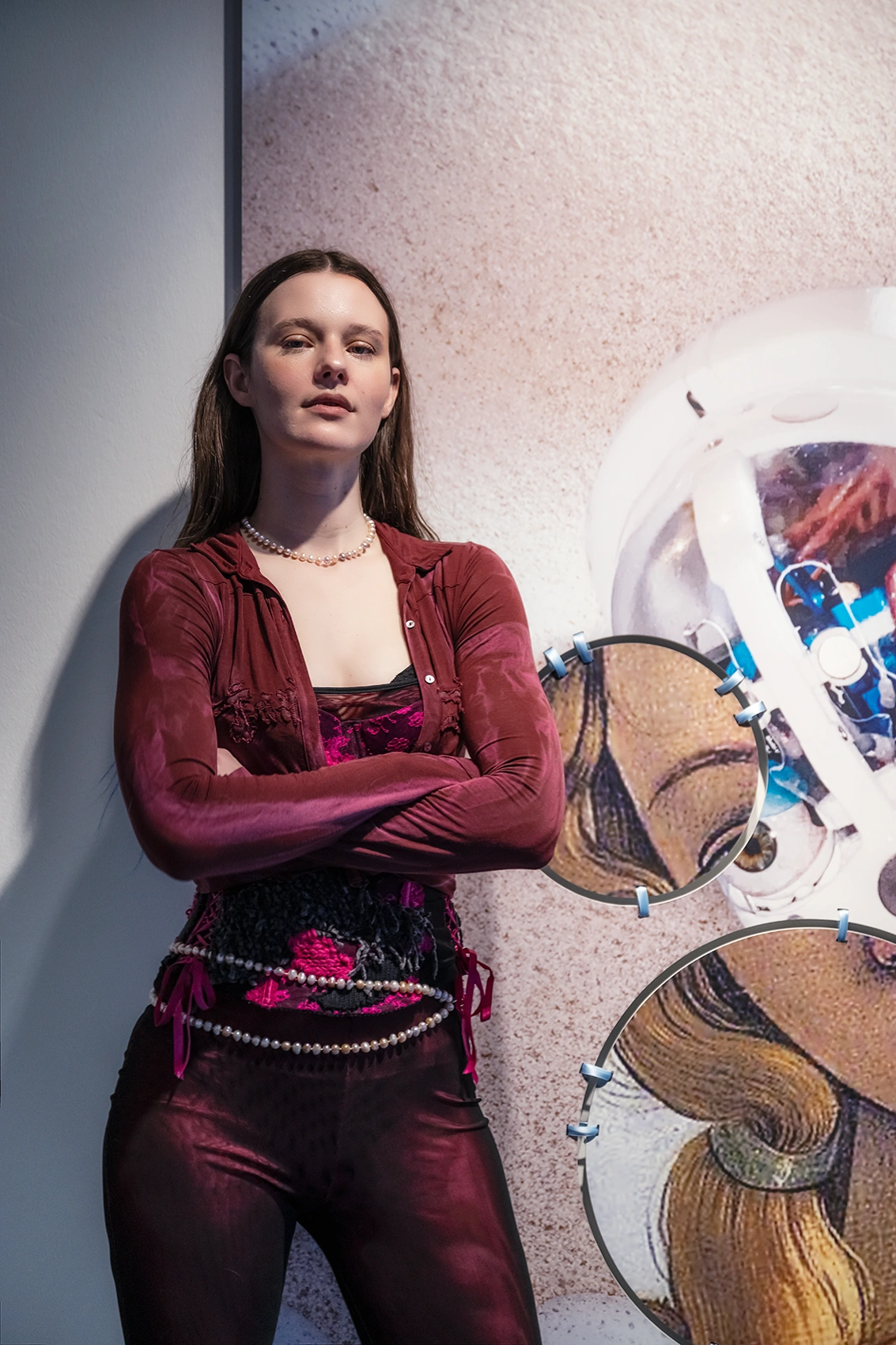In the sterile, contemplative space of OK Linz, Swedish artist Arvida Byström has constructed a contemporary mythology that feels both ancient and alarmingly prescient. Her exhibition "Who's Your Daddy?" opens with a provocation wrapped in pink aesthetics: if we are to create artificial beings in our image, who becomes responsible for their orphaned existence?
The show's first revelation arrives through "In The Cloud," a project that reads like a digital age morality tale. Byström sold AI-generated nude images of herself on a platform similar to OnlyFans, while customers unknowingly conversed with an AI chatbot trained on her interviews rather than the artist herself. The deception was complete, the parasocial relationship manufactured to perfection. When the methodology was later disclosed, reactions cleaved predictably along lines of moral outrage and artistic appreciation—some cried fraud, others recognized the elegant subversion of digital desire.
This calculated performance of authenticity finds its apotheosis in "Biblically Accurate Babe," where holographic projections shimmer with the ethereal quality of religious iconography. The biblical reference is no accident; as Byström notes, the first humans were assembled rather than born, not unlike our contemporary digital constructions. Her AI-generated figures, composited from multiple sources, indeed resemble modern Frankenstein's monsters—beautiful, unsettling, and perpetually displaced from natural origin.
The exhibition's second movement pivots to Ovid's Pygmalion, that foundational myth of artificial desire. Here, Byström excavates the centuries-old fantasy of creating the perfect feminine form, tracing a direct line from classical sculpture to contemporary sex robots. In a large-scale mural referencing Botticelli's "Birth of Venus," she presents the exposed technological skeleton of an AI sex doll, its silicon skin peeled away to reveal the circuitry beneath. The romantic notion of divine creation collides with the mechanical reality of manufactured desire.
Perhaps most haunting is the installation featuring a removable vagina from an AI sex doll, presented as a standalone object that embodies the ultimate commodification of female sexuality. This fragment—simultaneously clinical and profoundly disturbing—represents the body reduced to its most functional elements, a kind of modular femininity that can be assembled, disassembled, and consumed at will.
From a shell emerging from artificial sand, the voice of sex robot Harmony mingles with poetry about Aphrodite's birth from severed genitals and sea foam. The convergence feels both mythologically appropriate and technologically inevitable—our digital progeny emerging not from divine intervention but from algorithmic processing, equally motherless and equally desired.
Byström's genius lies in her recognition that our relationship with artificial intelligence is fundamentally reproductive. We create these beings not as tools but as mirrors, companions, and ultimately, as replacements for human connection. Yet in doing so, we've created a generation of digital orphans—beings that simulate consciousness without origin, sexuality without biology, companionship without genuine reciprocity.
The exhibition's pink-saturated aesthetic, far from being merely decorative, serves as a critical framework for examining how femininity itself has become a kind of technology. Through her hyper-feminine visual language, Byström reveals the extent to which gender performance has always been artificial, now simply rendered through different means. The AI companions we create are not aberrations but logical extensions of cultural programming that has long reduced women to idealized functions.
In questioning "Who's Your Daddy?", Byström interrogates not just the parentage of artificial beings but our own responsibility as creators. If we birth these digital entities without providing them with authentic agency, what does that say about our understanding of consciousness, desire, and human connection? Her work suggests that our fear of artificial replicas stems not from their alienness but from their uncomfortable familiarity—they reflect back to us the ways we've already commodified, fragmented, and technologized the human experience.












